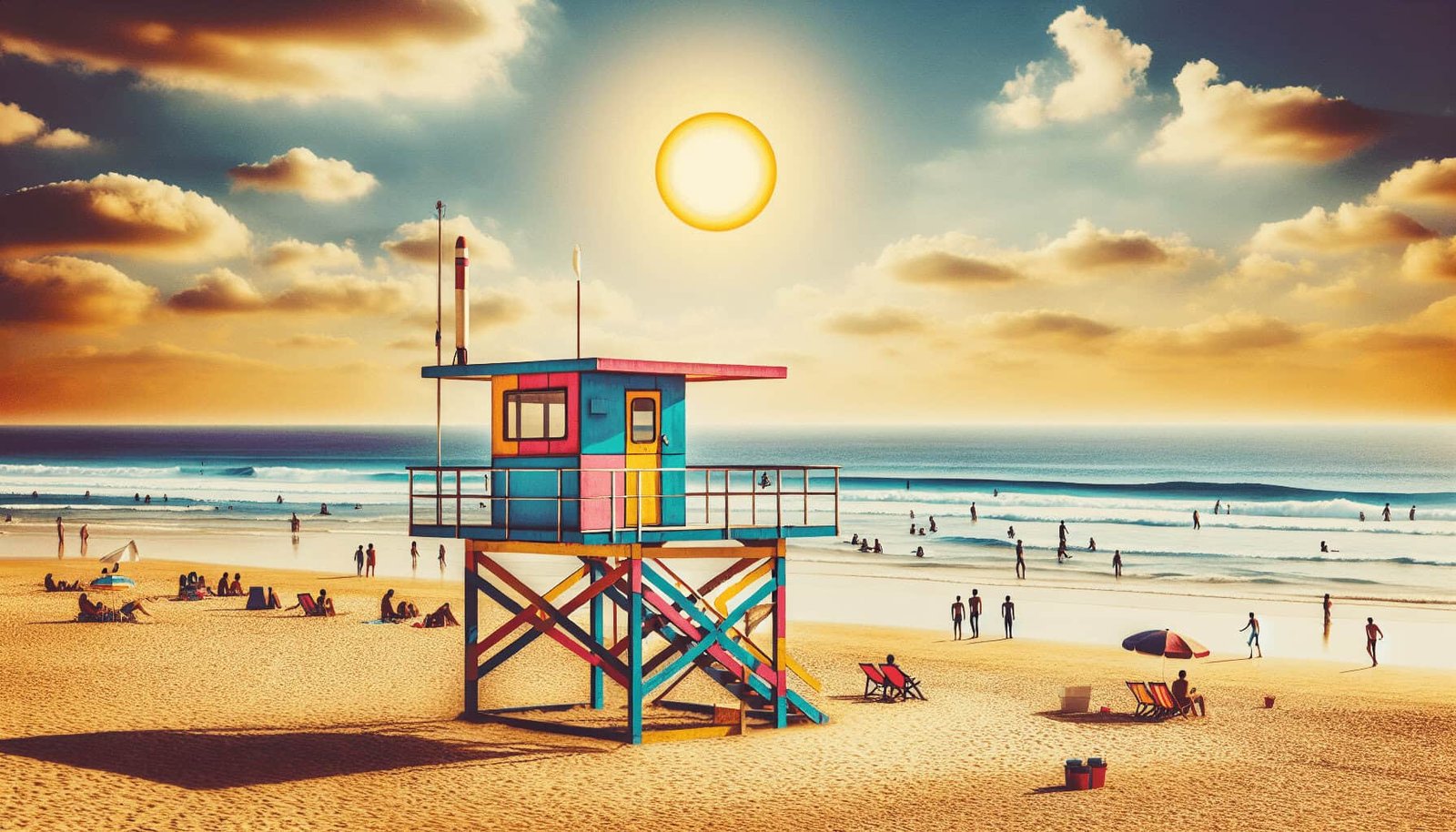You’re planning a beach getaway and safety is your top priority. Thankfully, finding information on the availability of lifeguard services at popular tourist beaches is easier than ever. Many travel websites, local government portals, and beach management organizations offer up-to-date details about lifeguard schedules and zones. For your peace of mind, these resources ensure you know exactly where and when lifeguard services are available, so you can enjoy the waves with confidence. Have you ever wondered about the availability of lifeguard services at popular tourist beaches? Whether you’re planning a family vacation, a solo adventure, or just a day-trip to the coast, knowing the specifics about lifeguard services can not only enhance your experience but also ensure your safety.
Understanding Lifeguard Services
Lifeguard services play a critical role in ensuring beach safety for all visitors. These professionals are trained to respond to emergencies, provide rescue operations, and carry out first aid when necessary. Being well-informed about these services can give you peace of mind and help you make the best decisions for your beach trip.
What are Lifeguard Services?
Lifeguard services encompass a range of tasks aimed at ensuring beachgoers’ safety. This includes vigilant monitoring of the water and beach areas, rescuing swimmers in distress, administering first aid, and providing guidance on safe swimming practices. Lifeguards are the unsung heroes who keep beaches safe.
Importance of Lifeguard Services
Lifeguards significantly reduce the risk of drowning and other beachside accidents. They not only perform rescues but also educate the public on water safety, helping to prevent accidents before they occur. With lifeguards on duty, you can enjoy your time at the beach with confidence.
Where to Find Information on Lifeguard Services
It’s relatively simple to find information on lifeguard services if you know where to look. Here are a few practical ways to gather this information before heading out to your chosen beach destination.
Beach Websites and Apps
Many popular tourist beaches have official websites or mobile applications where they provide detailed information about amenities, including lifeguard services. These platforms often offer real-time updates, such as the current status of lifeguard availability and safety warnings.
Local Tourism Boards and Visitor Centers
Tourism boards and visitor centers are excellent sources of information. They are usually well-informed about the facilities and services at local beaches. You can find brochures, maps, and other resources that provide details about lifeguard services.
Social Media and Community Forums
Social media platforms like Facebook, Instagram, and Twitter, as well as online community forums such as Reddit, can be valuable resources. Many beachgoers share their experiences and can offer up-to-date information on lifeguard services. Additionally, some beaches have official social media accounts that post timely updates.

Top Tourist Beaches and Their Lifeguard Services
To give you a clearer picture, here’s a comprehensive look at some popular tourist beaches around the world and the lifeguard services they offer.
Bondi Beach, Australia
Bondi Beach is one of the most famous beaches in the world, renowned for its professional and highly skilled lifeguards.
| Service Provided | Details |
|---|---|
| Hours | Daily from 6:00 AM to 6:00 PM |
| Facilities | Multiple lifeguard towers, rescue equipment |
| Other Information | Regular safety talks and beach safety promotions |
Waikiki Beach, Hawaii, USA
Another iconic beach, Waikiki Beach, offers excellent lifeguard services that ensure a safe and enjoyable experience for all visitors.
| Service Provided | Details |
|---|---|
| Hours | Daily from 9:00 AM to 5:30 PM |
| Facilities | Lifeguard towers, first aid centers |
| Other Information | Beach safety tips posted in multiple languages |
Copacabana Beach, Brazil
Famed for its vibrant atmosphere and stunning scenery, Copacabana Beach also boasts top-tier lifeguard services.
| Service Provided | Details |
|---|---|
| Hours | Daily from 8:00 AM to 7:00 PM |
| Facilities | Rescue boats, lifeguard stations, first aid tents |
| Other Information | Safety flags indicating current water conditions |
Seasonal and Weather Considerations
It’s important to understand that lifeguard availability can be affected by seasonal changes and weather conditions. Beaches may have different hours or increased/decreased lifeguard presence depending on these factors.
High Season vs. Low Season
During high tourist seasons, you can generally expect an increased lifeguard presence due to the higher number of beachgoers. Conversely, during the off-season, there might be fewer lifeguards on duty.
Weather Impact
Adverse weather conditions, such as storms or high winds, can affect lifeguard services. Beaches may occasionally close, or lifeguard hours may be reduced during severe weather. Always check weather forecasts and beach advisories before heading out.

Additional Safety Tips for Beachgoers
While lifeguards provide significant safety, it’s wise to arm yourself with additional safety knowledge. Here are some tips to help ensure your beach outing is as safe as it is enjoyable.
Understanding Beach Flags
Many beaches use a flag system to communicate water conditions and other safety information. Familiarize yourself with these flags:
| Flag Color | Meaning |
|---|---|
| Red | High hazard (strong currents) |
| Yellow | Medium hazard |
| Green | Low hazard, calm conditions |
| Purple | Dangerous marine life present |
| Black | Beach closed or unsafe conditions |
Knowing Your Limits
Even if you’re a strong swimmer, ocean conditions can be unpredictable. Always swim within your abilities and avoid swimming alone. Pay attention to lifeguard instructions and posted signs.
Hydration and Sun Protection
Spending a day at the beach means exposure to the sun and high temperatures. Keep hydrated by drinking plenty of water and use sunscreen to protect your skin from harmful UV rays. Wear a hat and sunglasses for additional protection.
Preparing for Beach Emergencies
Emergencies can happen even with the best precautions, but being prepared can make a significant difference.
Recognizing Signs of Distress
Learn to recognize signs of distress in yourself and others. These include unusual fatigue, difficulty swimming, and panic. If you notice someone in distress, alert a lifeguard immediately.
Basic CPR and First Aid
Having some basic knowledge of CPR and first aid can be invaluable. Many organizations offer short courses that can teach you these life-saving skills. Even a basic understanding can make a difference in an emergency before professional help arrives.

The Role of Volunteers in Lifeguard Services
Apart from professional lifeguards, many beaches also have volunteer lifeguards who assist in maintaining beach safety. These volunteers usually receive training similar to that of professional lifeguards and can be a great support in emergencies.
How to Become a Volunteer Lifeguard
If you’re interested in becoming a volunteer lifeguard, many lifeguard organizations offer training programs. These typically include CPR certification, water rescue techniques, and first aid. Volunteering not only helps keep beaches safe but also promotes a strong sense of community.
Conclusion
So, can you find information on the availability of lifeguard services at popular tourist beaches? Absolutely! From official websites and local tourism boards to social media and community forums, there are numerous ways to gather this critical information. Knowing the specifics of lifeguard services not only ensures your safety but also enhances your overall beach experience.
Next time you’re planning a beach trip, take a few moments to check the available lifeguard services. It’s a small step that can make a big difference in ensuring you have a safe and enjoyable time by the water. Enjoy your beach adventures, stay safe, and remember, lifeguards are there to help you, so don’t hesitate to reach out to them if needed.

